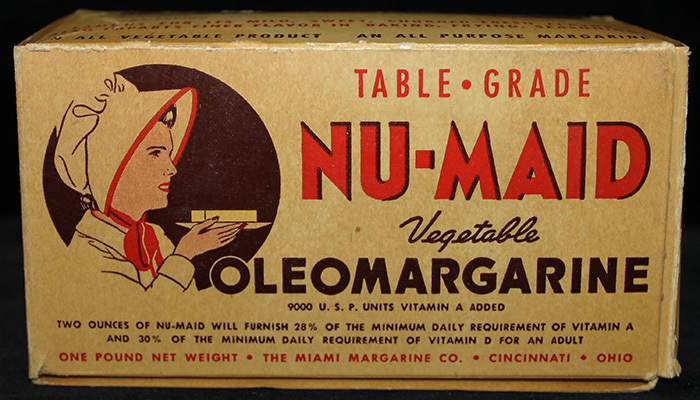Orange-white, orange, green-white, blue, blue-white, green, brown-white, brown.
Category 5 is even easier to make than 5E.
Please dont bend and pinch your cables. Make a loop as shown in the bottom middle.
Add a piece of string to tie it.
And no zip ties. Zip ties are for attaching cables to other things, and should never be tightened fully.
Velcro ties ftw.
tie the cable into a knot, it’s the fastest and least damaging way to store cables
If we are taking a gentle loop, sure. But if you mean (and I’ve seen this BTW) tying like a pair of shoes and pulling it tight, I’d kick you out of my IDF.
Not saying thats what you were thinking, just had to share my memory of that pain.
I still prefer a bit of waxed thread though. Great for any cable, be it utp, f/utp, armored, fiber, coax, whatever. But that’s also how I started, so it probably plays a role in why I like it.
Edit: plus a string makes a nice and neat way to hang it on a hook.
Ugh this takes me back to my electrician days: trying to splice these fuckers in a dark, hot attic, with only a blue-hued headlamp to help you piece out what color everything actually was. Good times.
I mean they make HDMI over CAT extenders, just get a pair
HD baseT
If only this had taken off in the consumer market.
Imagine a future where video was just ethernet and we didn’t have to worry about crappy cables or DRM
AV over IP is the latest trend in the commercial world actually.
Interesting! Is that usually like HDbaseT or SDVoE? Would you recommend it for menus and screens in a bar?
I could see a lot of uses for a product like this for bars and offices I work in, but I would imagine the could might be prohibitive if it’s more than a few hundred dollars per unit.
https://products.sdvoe.org/avcat/ctl18883/index.cfm?manufacturer=dvigear&product=dn-300
It’s been mostly called AVoIP, I don’t know if I’d recommend for menus at a bar, it’s more of an easy way to change inputs to multiple displays, before with hdbt tx/rx pairs, you had to have either a switcher that had hdbt inputs/outputs (usually limited ports) or all your tx/rx pairs in the rack feeding into a switcher and a control unit telling the switcher to switch. With the avoip, it’s just a control unit and arranger connected to the network switch. It’s a little slow but it’s still developing.
After reading that I thought the ‘HDMI Forum’ was a literal internet forum of nerds who invented HDMI and didn’t want to make it open source for anyone. lol.
tbh high bandwidth cables over copper are a bit of an anti pattern.
Would be a lot cheaper and compact if ethernet and video over fiber were more popular already
Having professionally terminated fiber, that shit is nasty and hazardous in a way copper will never be.
The little fiber bits can be razor sharp, you have to be careful of the naked fiber end, because it can get into your skin like a splinter, only it is clear, nearly invisible, can shatter if grabbed too hard, and is invisible to MRI and X-RAY scans…
I mean, if it weren’t more dangerous, it would be really unbalanced. You want the player to have to make active choices with upsides and downsides.
The equipment required to fuse glass fiber to connectors is still slightly more expensive than a set of crimp tools. Really cool machine though
You don’t need to fuse every fiber connection unless you’re doing really long distance fiber.
For runs inside a building, single pulls with mechanical splices would work just fine. You shouldn’t get much loss as long as there aren’t more than two or so mechanical splices.
Source: worked as a technician for a fiber optic ISP.
Oh, I’ve never heard of mechanical splices, only the ones that heat and melt the fibers together. Can you do custom lengths? Is there a machine that does it?
I would genuinely love any info you have
It’s basically just an end you attach to the fiber:
https://www.gomultilink.com/products/066-222-10?category=44
You’ll use a cleaver to break the fiber at a 90 degree angle to reduce attenuation, and slide it into the connector. Once it bottoms out, you press something down and it grabs the fiber, holding it in place.
I know it’s Youtube, but here’s a video of the process:
https://www.youtube.com/watch?v=WuKm7t87SJU
The idea is you would pull a fiber cable through a building and terminate it with ends like these. Then install them into a bulkhead to make them similar to solid-core CAT5/5e/6 cable into a patch panel. You can then use premade jumpers to connect from the building wiring to the devices you’re using.
The fusion machines are generally used for long distance links because of the significantly lower attenuation per splice. A fiber line that goes 40 miles is likely to have tens if not hundreds of splices in it depending on the number of spans of cable, and industry standard for fusion splices is 0.00-0.05 db attenuation per fusion splice.
That is super cool! Thanks for taking the time to reply!
Yeah, probably wont be possible for people to make their own data cables for much longer. Fiber cables are much cheaper and thinner than copper at least, so not as much of an issue to buy different sizes instead of making them yourself.
That’s mostly because too few people use them.
The engineering requirements are also a lot higher. It’s the difference between a nut, bolt and spanner, compared to a welding machine.
Just be careful unspooling it, it loves to kink up and any bend with a radius tighter than like 2 inches ruins the cable.
I once helped my brother run about 15 strands through his house and only around half of them actually worked when we were done. Wish we knew that when we started.
Back-coiling is a game changer. Every other coil is reversed, leaving a net zero in coils. It just pulls out straight.
Patch cables are stranded, spool cable is solid. Spool is good for between jacks and patch panels, less good for crimping RJ45 ends onto.
They make stranded bulk cable, but there’s really not much use for it.
Nobody wants to pay people to terminate cat6 patch cables. It’s not cost effective compared to just buying premade cables of various lengths.
Maybe that’s why you are downvoted? You are otherwise factually correct. You shouldn’t use solid cable for patches…solid cable belongs in the wall/plenum to the back of the patch panel, where it doesn’t get messed with. It’s too fragile to be used outside of a wall.
Stranded is more flexible, making it better suited for patches, but it also doesn’t punch-down into jacks as nicely (making it a poor choice for runs between patch panels/wall jacks)
Just…whatever you do…don’t get CCA. Cheap crap shouldn’t even be allowed to call itself CAT6.
What are you talking about? You can get both solid and stranded cable on spool. Depending on the standard you might be required to terminate into a patch panel or jack, but you can get just about any cable on a spool you might want.
You can buy stranded in spool too, and its not uncommon in shops that actually make their own patch cables, though most just buy them.
Like others said they come in both, I usually just buy solid and it works just fine for patch cables as well, no issues whatsoever crimping RJ45 onto em
Plus it always seems like stranded is just lower quality anyways, yea it’s more flexible, but how much flexibility do you really need? For most cases, not much
All the patch cables I’ve ever cut open (with the exception of one that came with my ISP’s modem) have been solid copper cable.
In my experience, long term reliability of crimped stranded cable (that particular combo, to be clear) has lower longevity with vibratory environments.
There are some crimps that are great for stranded, but the RJ series (and others which stamp down) generally don’t seem to be good enough.
Again, anecdotal, but yeah.
I think that has to do more with the heads being used and the quality of the cable than anything. I’ve seen tons of cheap heads on good cable, and it goes poorly after a while.
I generally recommend cable thats been third party tested for both performance and physical resilience. Haven’t seen any decent riser that wasn’t, but I have seen some patch from major brands that definitely wasn’t.
Nah man, these were terminations from companies like L-com, molex for a little while, etc.
You’re absolutely correct otherwise, but we spent money on what were supposed to be reliably engineered products by large connector companies. The wire was supposed to be good stuff too. I was a lot younger so I don’t remember the exact details honestly.
Oof, that sucks.
Yeah big brands can screw up too, I had several spools of coax fail once, and it turned out the whole batch had a problem. I’m just glad no one pulled first, tested later.
I’ve only ever had spooled stranded cable (with solid copper strands). It’s very good for making patch cables.




